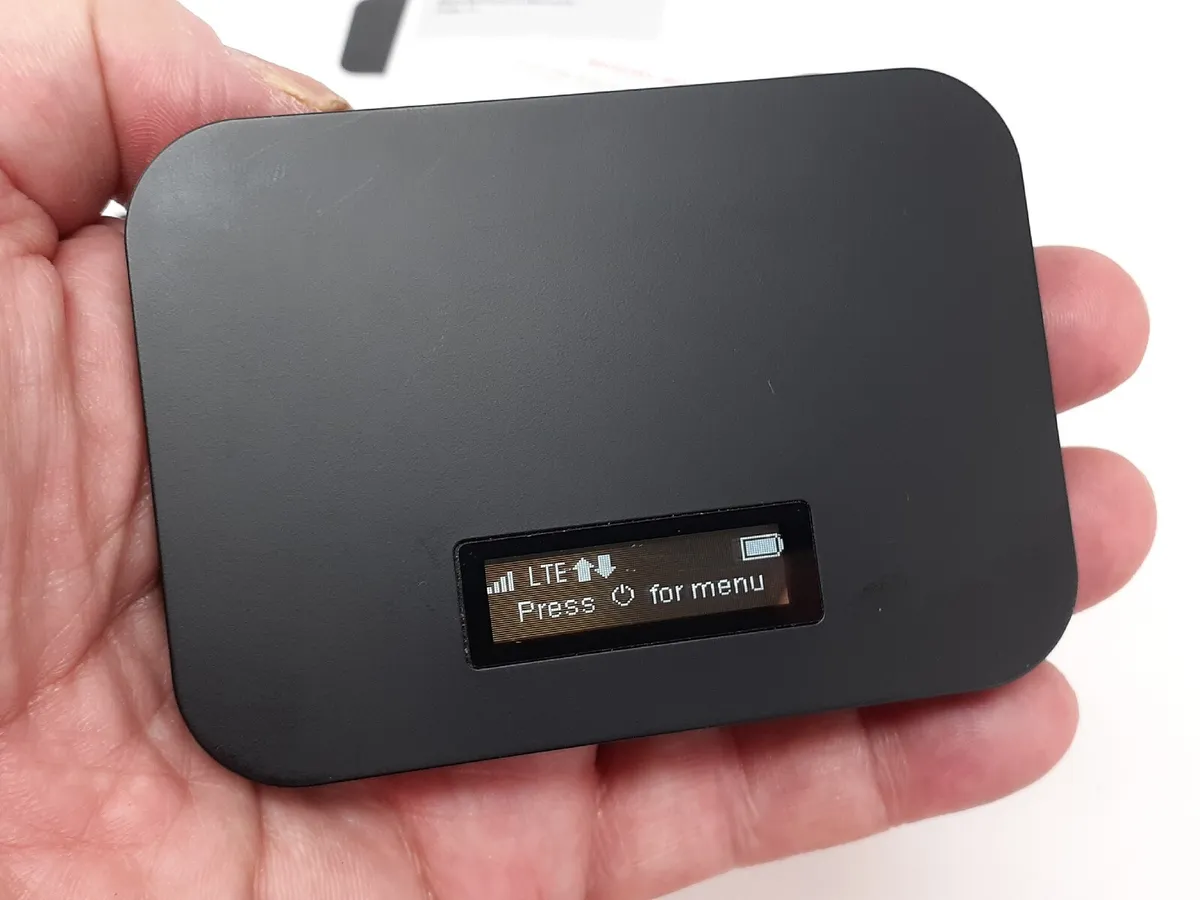The Franklin T10 is a compact device that works by tapping into cellular networks (often T-Mobile) and transforming that signal into a Wi-Fi network that your laptop, tablet, or other devices can connect to. Let’s explore its features, who it might benefit, and situations where it might not be the best fit.

Franklin T10 Features at a Glance
- Size and Portability: Designed to fit in a pocket or bag easily. Great for those who need internet access on the move.
- Touchscreen Display: Makes setup and checking data usage easy, even without connecting it to another device.
- Battery Life: Varies depending on usage, but expect it to last several hours on a single charge.
- Parental Controls: Some versions of the device may allow you to manage what connected devices can access.
- Guest Network: Ability to create a separate Wi-Fi network just for visitors without giving them your main network password.
Who Could Benefit from the Franklin T10 Hotspot
- Travelers: Perfect for road trips, RVs, or even hotels where Wi-Fi is spotty.
- Remote Workers: If your job takes you to sites without reliable internet, this can be a lifesaver.
- Students: Useful for studying in locations away from home where Wi-Fi might be unavailable.
- Digital Nomads: Those who live a location-flexible lifestyle often rely on hotspots for connectivity.
- Emergency Backup: Even if you have home internet, a hotspot can keep you connected during outages.
Important Considerations Before You Buy
- Carrier and Data Plans: The Franklin T10 often works with T-Mobile, but other carriers may offer it. Data plans vary in price and how much high-speed access you get before potential slowing.
- Speeds vs. Needs: Don’t expect the same blazing speeds of home cable internet. Great for basic web browsing, email, and light streaming, less ideal for hardcore gaming or massive downloads.
- Coverage Matters: If your chosen carrier has weak signal where you’ll use it, the hotspot is useless. Check their maps carefully.
Situations Where a Franklin T10 Might NOT Excel
- Replacing Home Internet: Families who heavily stream or have multiple people online at once may hit data caps quickly.
- Large File Transfers: If your work involves uploading/downloading huge files, hotspot data limits could be a bottleneck.
- Signal Seekers: In areas with poor cellular reception in general, even the best hotspot will struggle.
Tips for Maximizing Your Franklin T10 Experience
- Data-Conscious Apps: Be aware of what apps on your connected devices use lots of data in the background, and restrict them if possible.
- External Antenna: Some models may allow connecting an antenna for boosting weak signals, especially helpful in rural areas.
- Plan Alignment: Choose a carrier and a monthly data plan that realistically matches your usage needs to avoid overage charges.
The Verdict: Should You Consider the Franklin T10? If any of these resonate, investing in a Franklin T10 hotspot could be a smart move:
- You Crave Flexibility: When being able to work or stay connected from anywhere is essential, it shines.
- Budget Matters: Often a more affordable option than constantly relying on public Wi-Fi or tethering from your primary phone.
- Simplicity is Key: Offers easy setup and management, even for those less tech-savvy.
Exploring Alternative Portable Hotspot Devices on the Market
While the Franklin T10 is a solid choice, here are other categories of devices and factors to consider when making your decision:
- Dedicated Mobile Hotspots from Other Brands:
- Nighthawk M Series (Netgear): Sometimes boast more powerful batteries and extended feature sets, potentially appealing for heavy users.
- Inseego (formerly Novatel) MiFi Series: Known for rugged designs. Good for those who frequently use their hotspot outdoors
- Carrier-Branded Hotspots: Verizon, AT&T, etc., have their own hotspot devices, often bundled with specific data plans.
- Using Your Smartphone as a Hotspot:
- Pros: No extra device to buy if your phone’s plan allows tethering/hotspot usage.
- Cons: Can drain your phone’s battery quickly and some carriers impose stricter data caps on tethering compared to dedicated hotspot plans.
- Travel Routers:
- GL.iNet Series: These offer advanced features like being able to connect to public Wi-Fi and rebroadcast it, or even utilize an ethernet connection (like in a hotel room).
- Downside: More complex setup, aimed at tech-savvy users who need the extra functionality.
Choosing the Right Fit: Questions to Ask Yourself
- How much data do I REALLY need per month? Be honest with yourself to avoid costly plan upgrades later.
- Battery life critical? If often away from outlets for long stretches, seek hotspots with larger batteries or quick-charge capability.
- Signal strength paramount? Devices with external antenna ports may allow you to boost reception in fringe coverage areas.
- Love a touchscreen? Some hotspots lack that T10 convenience, consider if it matters to you.
Beyond the Franklin T10: Research is Key
Before buying, try these resources to compare hotspots:
- Online Reviews: Websites specializing in tech often have detailed reviews and head-to-head comparisons.
- Carrier Stores: Seeing devices in person and asking staff questions can be helpful, even if you don’t ultimately buy from them.
- Manufacturer Websites: Dig into full specs and features, sometimes revealing subtle differences between seemingly similar models.
Empowered Connectivity on YOUR Terms
The world of mobile hotspots is dynamic. By understanding the strengths of the Franklin T10, the types of alternatives available, and most importantly, your own unique connectivity requirements, you’ll find the perfect device to keep you online whether you’re commuting, camping, or working from a cozy cafe.
لا تعليق